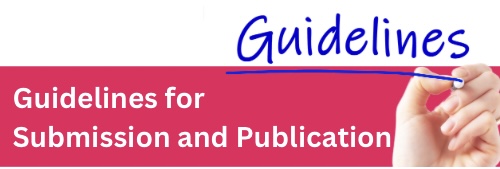THE RELATIONSHIP BETWEEN FALLS AND MENTAL STATE AMONG ELDERLY IN BANGKOK
Keywords:
elderly, falls, mental stateAbstract
This descriptive research aimed to study the situation of falls, mental state, and the relationship between falls and mental health among elderly people in Bangkok. The sample consisted of 396 healthy older adults obtained through multistage randomization and inclusion criteria. The research instruments were questionnaires developed by the researcher about personal information, fall history, and mental state. The content validity index was .97 and reliability coefficient was .892. Descriptive statistics and Chi-square test were performed for data analysis.
The results found that 1) most participants were female (61.5%) with their average ages equaled 66.95 years old (SD = 4.06 Min-Max = 60 - 95). 2) They were healthy or had fallen no more than 2 times within the last year (35.9%), in which the majority of the participants had fallen 2 times (56.8%). Falls were the leading cause of injury (87.2%). The areas in a house that they had fallen mostly were a living room and a kitchen room (32.4%). Meanwhile, the exterior area with the most falls was the surrounding area of the house (40.1%). The internal causes of falls were dizziness or lightheadedness (37.2%) and the external cause was slipping (84.5%). 3) According to their mental state, it was found that most of them were feeling lonely (71.1%), anxious about an illness (86.9%), and fearful about disabilities (59.3%). The causes affecting the relationship between falls and the mental state were the anxiety about living and caregiver (chi-square = 12.687, p = .000) and the fear about disabilities (chi-square = 4.308, p = .038) at a statistically significant level .05. According to research findings, the elderly should be protected from falls, because those who have fallen are more fearful and anxious than those who have not. In addition, caregivers and families should take an active role in providing psychological support to the elderly with a history of previous falls.
Downloads
References
Department of Disease Control. (2021). Guidelines for the prevention of coronavirus disease 2019 (COVID-19) for the general public and at-risk groups. Retrieved from https://ddc.moph.go.th/viralpneumonia/file/int_protection/int_protection_030164.pdf
Department of Health. (2020). Bureau of elderly health annual report 2020. Nonthaburi: Ministry of public Health.
Devalersakul, N., Siriwarakoon, W., & Roadyim, C. (2016). The development of the elderly as a burden to power: case study of Rangsit city municipality. Veridian E-Journal, Slipakorn University, 9(1), 529-545.
Ekplakorn, W., (Ed.). (2016). Report of the 5th Thai health survey by physical examination 2014. Nonthaburi: Health Systems Research Institute.
Ensrud, K. E. (2013). Epidemiology of fracture risk with advancing age. The Journals of Gerontology Series A: Biological Sciences and Medical Sciences, 68(10), 1236-1242. https://doi.org/10.1093/gerona/glt092
Gray, R., & Thongcharoenchupong, N. (2012). Determinants of mental health among older persons. Thai Population Journal, 3(2), 45-63. Health Systems Research Institute. (2017). HSRI Annual Report 2016. Nonthaburi: December company.
Howharn, C., Onthaisong, C., & Pramsathis, W. (2018). Factors predicted falls among elderly in northeastern Thailand. Journal of Prachomklao College of Nursing, Phetchaburi Province, 1(1), 26-38.
Institute of Geriatric Medicine. (1999). Mini-mental state examination-Thai 2002. Nonthaburi: Department of Medical Services, Ministry of public Health.
Institute of Geriatric Medicine. (2015). Guidelines for geriatric care at home for chronic diseases and geriatric syndromes. Nonthaburi: Department of Medical Services, Ministry of public Health.
Jitapunkul, S., Kamolratanak, P., & Ebrahim, S. (1994). The meaning of activities of daily living in Thai elderly population: Development of a new index. Age and Aging, 23(2), 97-101.
Khongrang, S., Boongird, C., Phiphadthakusolkul, S., & Putthipokin, K. (2019). Health promotion education for elderly patients by using structured self-health records to enhance knowledge and attitudes toward fall prevention. Ramathibodi Medical Journal; 42(1), 19-28.
Khumtaveeporn, P., & Jirathummakoon, S. (2016). Health management of hypertension elderly in urban community, Bangkok. Journal of The Royal Thai Army Nurses, 17(2), 154-162.
Legters, K., Verbus, N., Kitchen, S., Tomecsko, J. & Urban N. (2006). Fear of falling, balance confidence and health-related quality of life in individuals with post-polio syndrome. An International Journal of Physical Therapy, 22(3), 127-135. https://doi.org/10.1080/09593980600724196
Mahoney, F. I., & Barthel, D. W. (1965). Functional evaluation: The Barthel index. Maryland State Medical Journal, 14(2), 61-65.
Noimontree, W. (2018). Fear of falling: Geriatric syndrome and nursing role using evidence-based practice. The Journal of Faculty of Nursing Burapha University, 26(3), 92-101.
Office of the National Economic and Social Development Council. (2013). Report of the populations for Thailand 2010-2040. Bangkok: Octoberprint.
Phongphanngam, S., & Nawai, A. (2020). Falls, fear of falling, and activity avoidance due to fear of falling among Thai community-dwelling older adults living in suburban Chiang Mai, Thailand. Journal of Health and Nursing Research, 36(1), 22-38.
Pongdee, J., & Kuhirunyaratn, P. (2015). Problems and health needs of the elderly in the area of responsibility of the Muang Baeng tambon health promotion hospital, Nong Ya Phung subdistrict, Wang Sa Phung district, Loei province. Community Health Development Quarterly Khon Kaen University, 3(4), 561-576.
Rodseeda, P. (2018). Fall Prevention among the elderly living in a community: The nursing role in home health care. Thai Red Cross Nursing Journal, 11(2), 15-25.
Rongmuang, D., Nakchattri, C., Tongdee, J., & Sombutboon, J. (2016). Incidence and factors associated with fall among the community-dwelling elderly, Suratthani. Journal of Phrapokklao Nursing College, 27(supplement), 123-138.
Rosen, T., Mack, K. A., & Noonan, R. K. (2013). Slipping and tripping: Fall injuries in adults associated with rugs and carpets. Journal of Injury and Violence Research, 5(1), 61-69. https://doi.org/10.5249/jivr.v5i1.177
Sawangbumrung, M. (2019). Loneliness and travel behaviors of older people. The Journal of Psychiatric Nursing and Mental Health, 33(1), 36-52.
Sekaran, N. K., Choi, H., Hayward, R. A., & Langa, K. M. (2013). Fall-associated difficulty with activities of daily living in functionally independent individuals aged 65 to 69 in the United States: A cohort study. Journal of the American Geriatrics Society, 61(1), 96-100. https://doi.org/10.1111/jgs.12071
Sorysang, L., Kompayak, J., & Natetanasombut, K. (2014). A study of fall prevention guideline in older adult living in Mitraphappatana community. Journal of The Royal Thai Army Nurses, 15(1), 122-129.
Thiamwong, L., & Suwanno, J. (2014). Risk factors related to balance impairment among rural community-dwelling older adults. Journal of The Police Nurse, 6(2), 56-69.
Williams, J. S., Kowal, P., Hestekin, H., O’Driscoll, T., Peltzer, K., Yawson, A., . . . Chatterji, S. (2015). Prevalence, risk factors and disability associated with fall-related injury in older adults in low-and middle-incomecountries: Results from the WHO study on global ageing and adult health (SAGE). BMC Medicine, 13(1), 1-12.
Wongpakaran, N., & Wongpakaran, T. (2012). Prevalence of major depressive disorders and suicide in long-term care facilities: A report from Northern Thailand. Psychogeriatrics,12(1), 11-17.
Downloads
Published
How to Cite
Issue
Section
License
ผลงานที่ได้ตีพิมพ์แล้วจะเป็นลิขสิทธิ์ของวารสารพยาบาลตำรวจ















